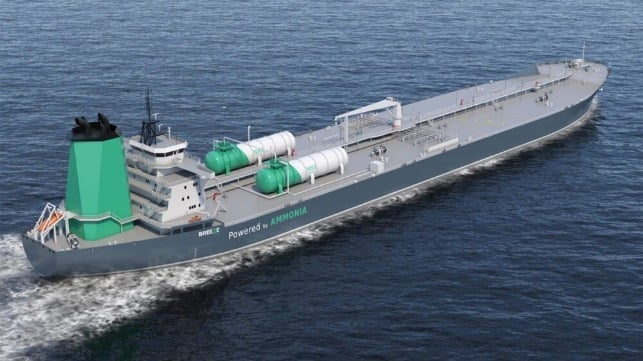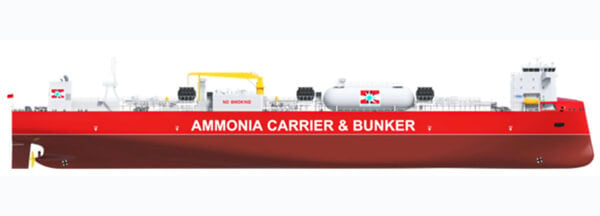Copenhagen Infrastructure Partners Plans Ammonia Shipping Newbuilds

The well-known Danish fund manager Copenhagen Infrastructure Partners (CIP) which focuses on renewable energy investments is moving forward to develop ammonia-fueled carriers to lead in the energy transition. Its Energy Transition Fund entered into agreements with Norwegian shipping company Faerder Tanks and with Singapore-based BW Epic Kosan to develop one of the first fleets of ammonia-fueled ammonia carriers with a goal of launching an end-to-end solution for ammonia to be used by the shipping industry.
CIP is a leader in segments of the energy transition well-known for its investments in wind energy as well as pioneering projects in hydrogen and industrial-scale Power-to-X projects. The investment group is pursuing ammonia production with facilities to be located in Australia, South America, and Mexico and now looks to connect the supply and demand with a fleet of ammonia carriers. The goal is to deliver comprehensive, end-to-end solutions for ammonia-fueled tankers, promoting the green transportation of clean ammonia.
“Our objective is to facilitate the green transportation of clean ammonia by utilizing the cargo as fuel,” said Niels H. Lindegaard, Senior Business Advisor at CIP. “The dialogue with leading companies has given us valuable industry insights and the ability to develop safe and robust end-to-end bunkering solutions as well as first-hand knowledge about critical developments and maturity of solutions.”
Working with Faerder Tanks, CIP has entered into a Memorandum of Understanding to develop a 50,000 cmb ammonia carrier. CIP reports the vessel will feature high maneuverability and ship-to-ship bunkering capabilities, setting a new standard for medium gas carriers (MGCs). The first vessel, expected to join the fleet in the second half of 2028, is based on the successful MGC sector which they highlight has become a workhorse of the shipping industry.

Faerder Tankers highlights the innovative features of the design for its 50,000 cbm ammonia vessel to be built for CIP (Faerder)
Faerder Tankers is calling the vessels the next generation of MGCs. CEO Capt. Paal Stenberg said, “These innovative vessels represent a breakthrough in design and functionality, combining state-of-the-art dual-fuel ammonia engines, superior maneuverability, and unparalleled bunkering capabilities—all within the trusted framework of today’s MGCs.”
They highlight the vessels will be equipped with dual-fuel ammonia engine, high maneuverability with retractable bow thruster and aft thruster, and full ammonia bunkering capabilities, all within the physical dimensions of today's MGCs. Each vessel will feature front accommodation for crewmembers and a 360-degree view from the bridge. Faerder says the design will enhance control during bunkering and ship-to-ship operations, while also improving hydrodynamics and fuel consumption efficiency.
Faerder Tankers, which was launched in 2018, worked in a multi-year partnership that was led by Equinor and involved Wartsila to develop a pilot ammonia-fueled Aframax tanker. The design concepts were presented in April 2023.
In a parallel effort, CIP and BW Epic Kosan plan to develop handy-sized ammonia carriers equipped with dual-fuel ammonia engines and bunkering capabilities. BW Epic Kosan will time charter a number of dual-fuel ammonia gas carriers ranging from 9,000 cbm to 35,000 cbm to CIP’s ETF or its subsidiaries.
CIP also reports that it is in “advanced discussions: with major shipping operators to develop Very Large Ammonia Carriers (VLACs). They would be used for its large-scale projects designed to build the end-to-end solution in the supply of ammonia as a fuel for shipping.
The investment group looks to develop an early leadership position in the emerging ammonia sector. A few ammonia-fueled tankers have already been ordered to be built in South Korea while much of the shipping industry continues to follow engine manufacturers' progress in commercializing ammonia-fueled marine engines.
